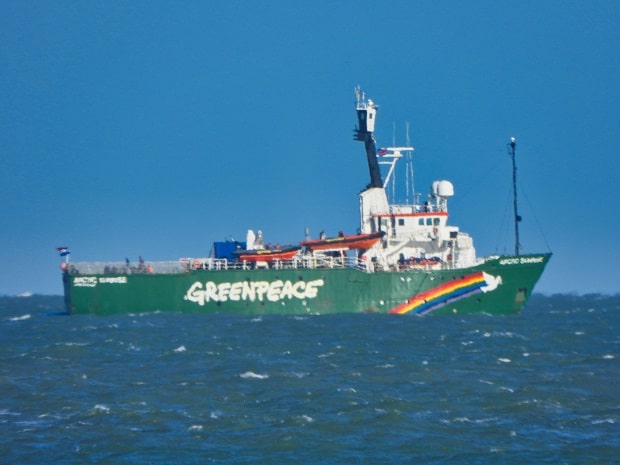
Greenpeace vessel Arctic Sunrise is anchored off Walpole Bay today (October 8).
The Arctic Sunrise is an icebreaking vessel operated by Greenpeace. She was previously used as a sealing vessel and activists had once confronted the ship while she was delivering equipment for the French government to build an airstrip through a penguin habitat in the Antarctic.
Designed as an icebreaker, her rounded, keelless hull allows her to navigate through sea ice. In 1997, The Arctic Sunrise became the first ship to circumnavigate James Ross Island in the Antarctic, a previously impossible journey until a 200m thick ice shelf connecting the island to the Antarctic continent collapsed.
In 2009, she spent many months working around the coast of Greenland and Arctic sea ice, documenting the effects of climate change on the region.
The vessel, built in 1975, is registered under a Norwegian flag and is 949 tonnes.
Greenpeace UK activists interrupted PM Liz Truss’s speech at the Conservative Party conference in Manchester earlier this week.
Greenpeace UK’s head of public affairs Rebecca Newsom and policy officer Ami McCarthy stood facing the prime minister close to the front rows of the hall where cabinet members were seated, holding up a banner asking: “Who voted for this?” in protest at the ‘shredding’ of environmental policies and the lifting of the moratorium on fracking.
Kent Police RIB Invicta is also off the Walpole Bay coastline.

